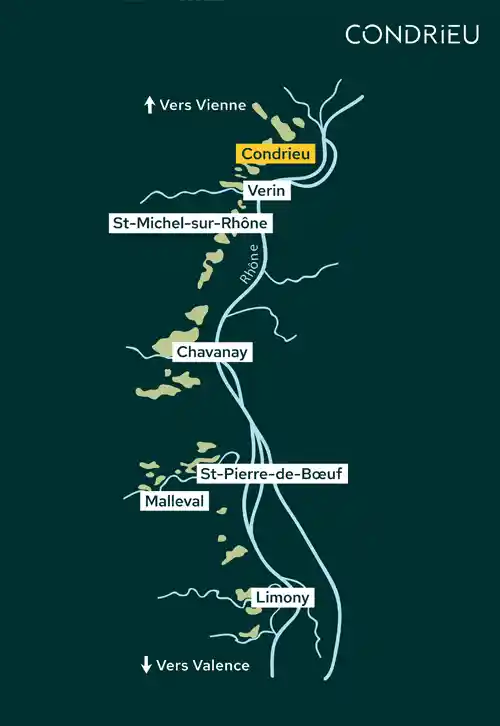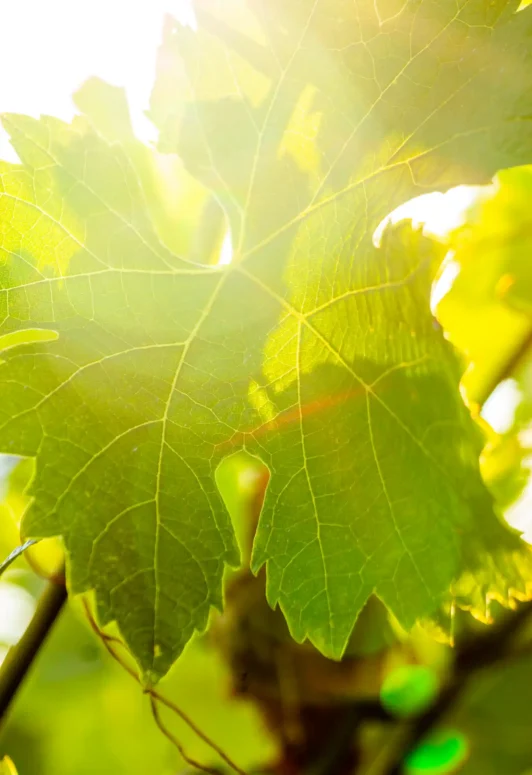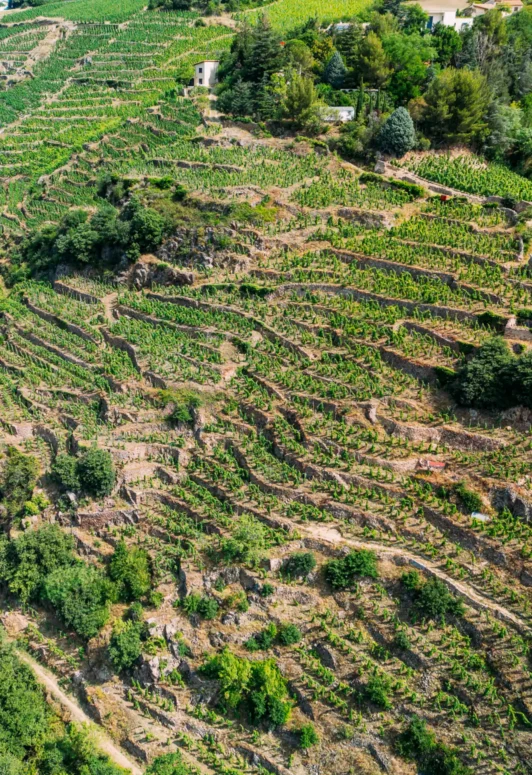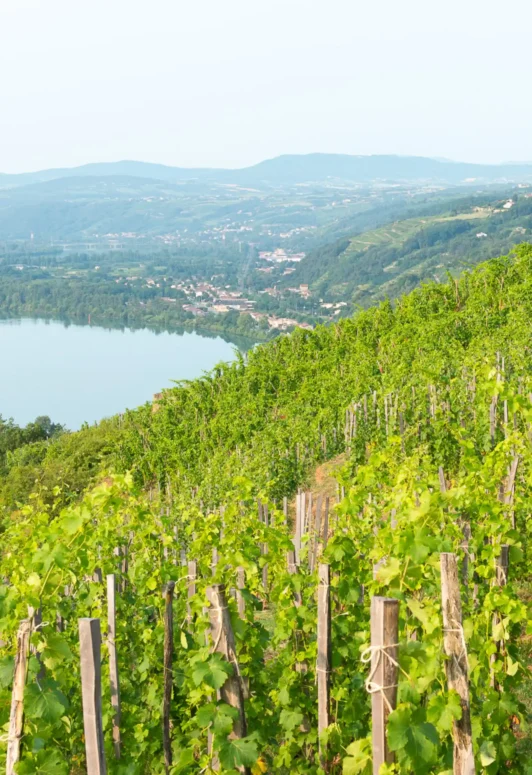VIOGNIER IN THE LAND OF ITS BIRTH
The wines of the Condrieu AOP are produced from the Viognier varietal and the Viognier varietal alone. Legend has it that it originated in the Dalmatia region and was brought to France by the Roman emperor Probus. But the latest research into the vine genome shows that Viognier comes from very old wild varietals that used to grow on the northern banks of the River Rhône. To preserve its typical character, the appellation’s wine producers have created a conservatory of the very old strains that are most representative of its high-quality traits. However, this local origin is not enough to explain why this grape variety, which has spread to other wine regions in France and around the world, finds an expression in Condrieu that is unlike anything it produces in other parts of the world.
THE SECRETS OF A GREAT TERROIR
there is a “Lyonnais” climate here and a variety of south/south-east-facing slopes. The vines are subject to temperate winters, hot summers and relatively regular rainfall (700-800 mm per year. They are protected from the cold north wind but exposed to the hot south wind. Often drying, this south wind speeds up ripening and helps protect the vines from disease. Taken together, all these factors provide the wines with their unique balance and lovely lively acidity that underpins the wide array of aromas specific to the grape variety. Find out more: maps of Condrieu
THE WINEGROWERS’ CRAFT
A grape variety, a terroir… But to craft fine wines, you also need the passion, knowledge and energy of the men and women dedicated to working these steep slopes with their fragile soils.
Cultivating the vine here requires a very careful selection, preparation and maintenance of the plots. Since at least antiquity, terraces have been built to enable the vines to attach themselves to the bedrock. Held up by “cheys“ (dry stone walls), these “chaillées/chayées” (narrow terraces) minimise erosion, retain the soil on the slopes and add to the sunshine received by the vines by creating a microclimate through the heat they store. These terraces are numerous and narrow, requiring constant maintenance that is highly demanding and time-consuming. The same goes for the stakes that support the densely planted vines (8,000 to 10,000 per hectare).
As there is very little that can be mechanised, all this work remains essentially manual and traditional. This is why the yields are so low, the production costs so high, and the wines therefore rare.
















